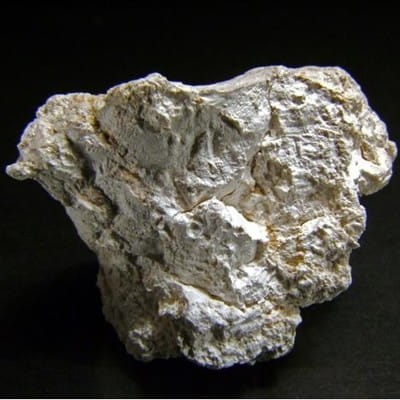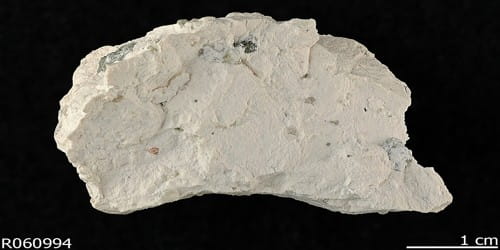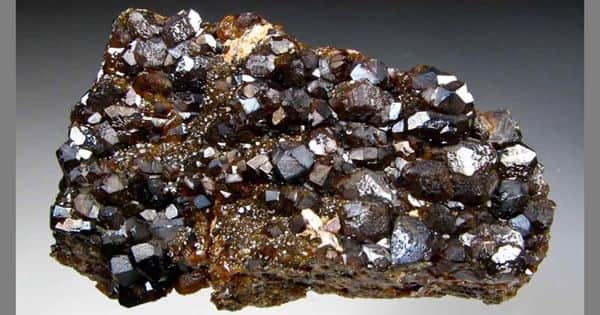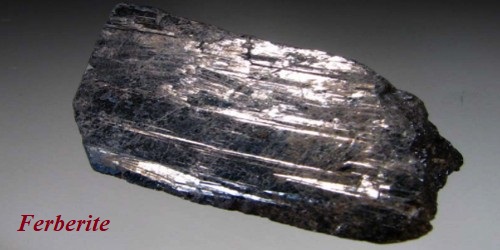Magadiite is a hydrous sodium silicate mineral [NaSi7O13(OH)3·4(H2O)] which precipitates from alkali brines as an evaporite phase. It is a soft white hydrous sodium silicate mineral.
The mineral was first described by Hans P. Eugster in 1967 for an occurrence in Lake Magadi, Kenya, and is also found at Olduvai Gorge, Tanzania. It is also reported from alkalic intrusive syenites as in Mont Saint-Hilaire, Canada.
General Information
- Category: Phyllosilicate
- Formula: [NaSi7O13(OH)34(H2O)]
- Crystal system: Monoclinic
- Unknown space group
- Color: White.

Properties
It forms as soft (Mohs hardness of 2) white powdery monoclinic crystal masses. The mineral is unstable and decomposes during diagenesis leaving a distinctive variety of chert (Magadi-type chert).
- Crystal habit: Minute platy crystals; spherulitic aggregates; powdery
- Tenacity: Puttylike
- Mohs scale hardness: 2
- Luster: Vitreous – dull
- Streak: White
- Diaphaneity: Translucent to opaque
- Specific gravity: 2.25 calculated
Optical properties: Biaxial
Occurrence:
It is a rare clay mineral, a monoclinic sodium silicate, found in putty-like layers deposited from brines of some former lakes.
In silts of upper Pleistocene to recent age, precipitated by evaporation of saline brines (Lake Magadi, Kenya); in veins cutting playa sediments and in muds associated with alkali salts and brines (Alkali Lake Playa, Oregon, USA); in altered volcanic rocks (Trinity Co., California, USA); in marble xenoliths in an intrusive alkalic gabbro-syenite complex (Mont Saint-Hilaire, Canada); in miarolitic cavities in a nepheline syenite sill (near Saint-Amable, Canada).
Information Source:
















